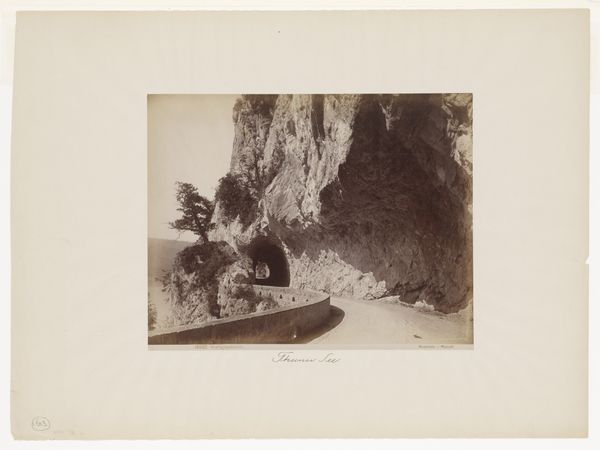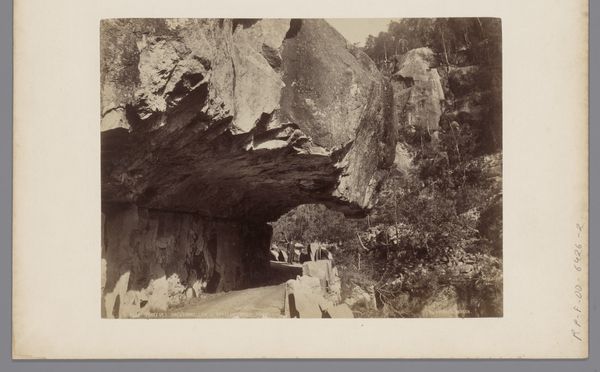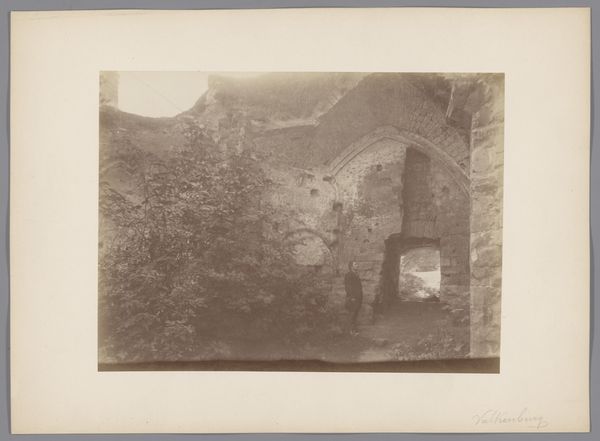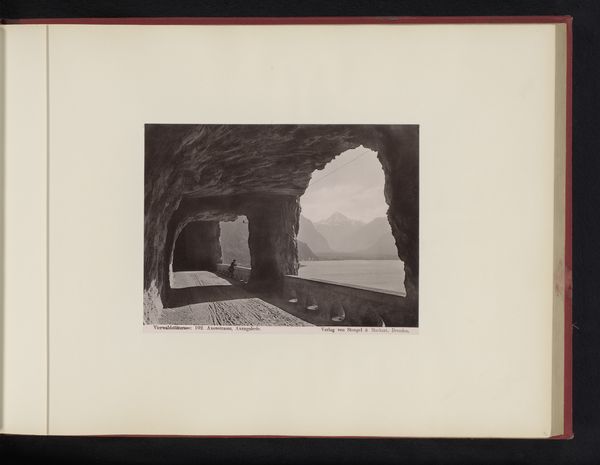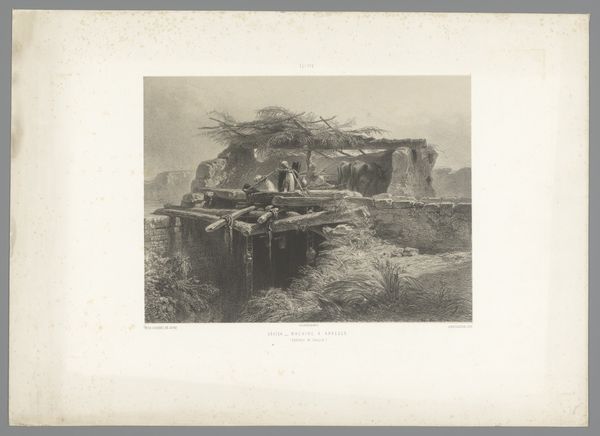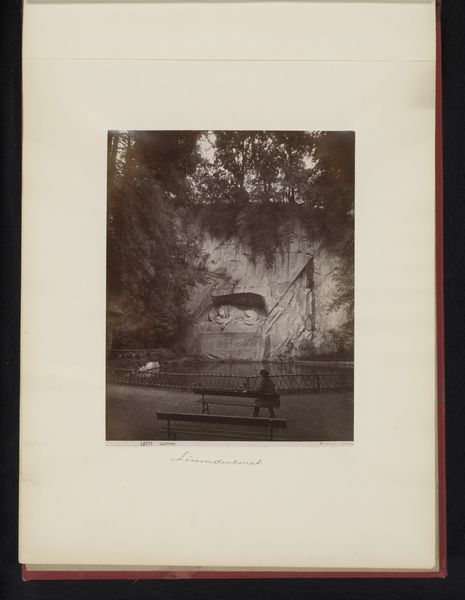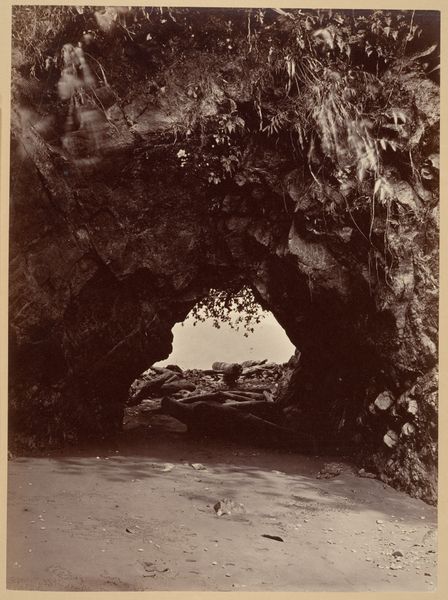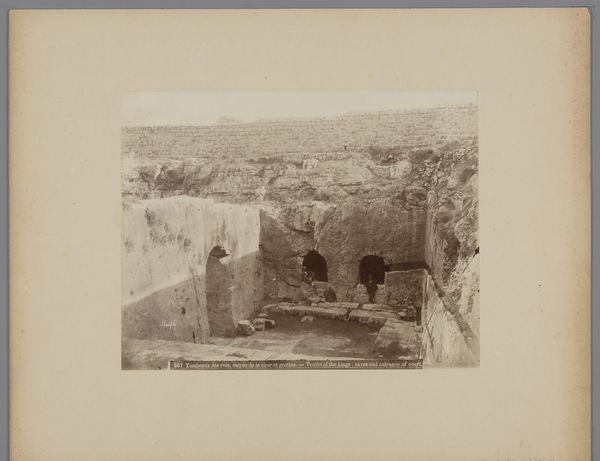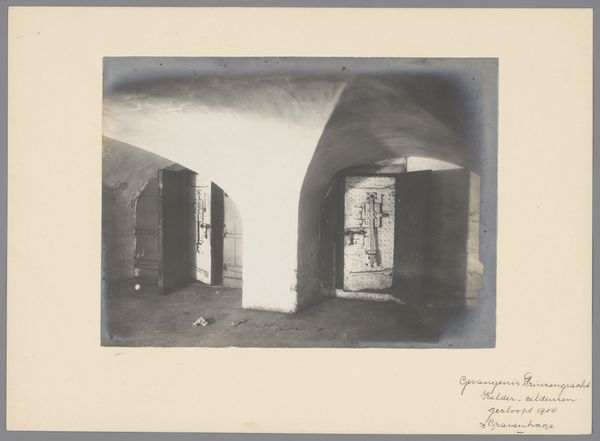
print, photography, gelatin-silver-print
# print
#
landscape
#
photography
#
gelatin-silver-print
#
cityscape
#
post-impressionism
#
monochrome
Dimensions: height 214 mm, width 272 mm
Copyright: Rijks Museum: Open Domain
Curator: Here we have an intriguing gelatin-silver print titled "Tunnel van de Axenstrasse," created sometime between 1895 and 1910. Editor: It’s quite atmospheric, isn’t it? The stark monochrome palette immediately creates a sense of dramatic contrast between the solid rock and that glimpse of the bright alpine landscape. Curator: Precisely! The photograph captures a roadway carved through rock, leading towards a vista of lake and mountains. This prompts a fascinating dialogue between human labor and natural grandeur, doesn’t it? The construction of this tunnel – its physical creation through human intervention – enabled an increase in mobility, fundamentally changing social connections across the landscape. Editor: Absolutely. And thinking about who would've traveled this road at the time - who benefitted from that increased mobility? What does that act of engineering reveal about social class or accessibility in the early 20th century? I'm also drawn to the composition: that rough-hewn tunnel frames an almost postcard-perfect scene. The people on the road become anonymous figures almost consumed by the image's depth. Curator: Indeed. Considering the period, photography was rapidly industrializing, becoming more accessible. "Tunnel van de Axenstrasse" uses technology to document infrastructure intended to better integrate Swiss territories via enhanced trade and travel. This print's mass reproducibility means that this photograph was probably disseminated for profit by either the photographer or their distribution outlets, rather than acting solely as a personal artwork. Editor: You make me consider it differently. It isn't just a record, it's a commodification. These landscape photos really romanticized particular ideas about nationhood at that point in history, selling the ideal Swiss experience while probably neglecting a broader range of experiences for all social strata. Also the aesthetic of "the sublime" seems heavily at work here. Curator: The "sublime" certainly fits given the interplay of immense scale of the mountains combined with the tunnel's construction... it’s that sense of human endeavour amidst overpowering nature, available as an editioned print in storefronts to anyone wanting a reminder of their travels... Editor: Well, the questions it raises about accessibility, the packaging and selling of scenic beauty, all while underlining power structures within the Swiss social fabric - it’s far more complex than a beautiful picture, isn't it? Curator: It really is, a visual representation and promotion of industrial and cultural values, conveniently packaged as aesthetic and sublime experience. Editor: Exactly! Now I am eager to go do some research on these tunnels.
Comments
No comments
Be the first to comment and join the conversation on the ultimate creative platform.
